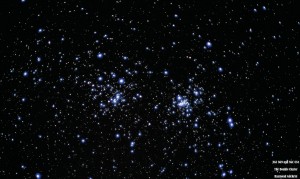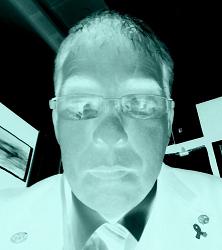
The double cluster, Two open clusters, NGC869 and NGC884 are located below the “W” of Cassiopeia and located in the constellation of Perseus.
November from 19:00 look North-East High up in the sky and find Cassiopeia, below this constellation you will find Perseus with it’s bright star Mirfak at magnitude 1.82 a yellow/white supergiant, and between Cassiopeia and Perseus you will find one of the real gems in the night sky “The Double Cluster”.
The cluster closest to Cassiopeia is NGC869 and the one furthest away is NGC884. These two clusters are visible and best viewed through smaller scopes or larger scopes with wide field of view (FOV) eyepieces. I use a SkyWatcher 120mm S/Tube refractor or my 200p (8″) scope with a 32mm planetary 60degree FOV eyepiece to show it at it’s best, binoculars fixed onto a tripod also show these clusters very well.
NGC869 is also known as “h persei” and composed of at least 350 stars in a compact open cluster arrangement, this cluster is over 70 light years in diameter and is located roughly 7,500 light years distant from us.
NGC884 is known as “chi persei” and is roughly the same distance and diameter as NGC869 but has slightly less stars, but has many supergiants that are over 50,000 times brighter than our sun.
The age of these two clusters vary in estimates NGC884 is over 10 Million years old and NGC869 is half this. If you get the chance check out these  clusters they really are jewels in the night sky.
clusters they really are jewels in the night sky.
Hi Ray,
Very nice photograph and science news article! Thank you.
Best Regards,
Kenn
Hai! Nice pica’s from ‘Here!
Hey Ray,
Great post and I love the picture 🙂